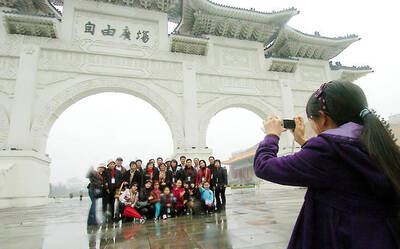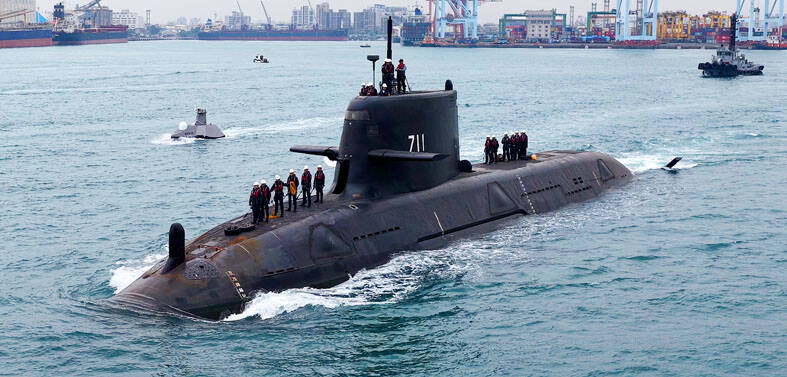A group of young people participating in a forum on transitional justice yesterday urged schools to introduce teaching materials on the history and background of the 228 Incident.
The 228 Incident refers to a military crackdown by the then-Chinese Nationalist Party (KMT) administration on civilian protesters that started on Feb. 27, 1947. Historians estimate that as many as 30,000 people were killed.
“Growing up, our generation only knew of Feb. 28 as a holiday, and we were just happy to have the day off from school, since teachers did not talk much about what had happened during the 228 Incident of 1947,” National Taiwan University College of Medicine student Chang Min-chao (張閔喬) told the forum.
“Only when I entered university did I have more exposure to literature and documents about that period, and the subsequent decades of White Terror rule by the KMT government. Reading the oral histories and interviews as told by victims’ families, I could feel their years-long fear, pain and suffering,” she said.
“We knew nothing about this through primary and secondary school, but it is important for students to know and understand this part of Taiwanese history,” Chang added.
A desire to learn more about that period led campaigner Tsai Yu-an (蔡喻安) to organize the Gongsheng Music Festival (共生音樂節) five years ago, which is this year to feature educational activities, musical performances and an outdoor exhibition on Ketagalan Boulevard in Taipei after a noontime march from the Executive Yuan on Tuesday.
“We started the event through student networking to attract young people to participate and learn more about the 228 Incident. We publish a booklet each year containing photographs and stories to relate young people to this Incident and get them involved in our work,” said Tsai, a graduate student at NTU.
Tsai said she has seen many young people realize the importance of Incident and how it affected Taiwan’s development.
“Many of them are hungry for more information, to read books and stories about that part of history, and to talk to the older generation about the White Terror era and the struggle for democracy,” she said.
Northern Taiwan Society deputy director Lee Chuan-hsin (李川信) said many young people in recent years have demanded the removal of statues of Chiang Kai-shek (蔣介石) and other symbols of the KMT’s authoritarian regime.
“We all know Chiang Kai-shek was the supreme KMT leader who made all decisions and was responsible for the massacres and atrocities following Feb. 28, 1947, but Chiang’s statues are still found in many schools and some people still revere him, paying respect to him year after year,” Lee said.
“It is time to end the blind cult of personality around this ruthless dictator. When worship of Chiang is terminated, then can we have real transitional justice in Taiwan,” Lee added.
The forum was hosted by the Northern Taiwan Society, the Union of Taiwanese Teachers, the Hakka Society and the Ketagalan Foundation.

SHIPS, TRAINS AND AUTOMOBILES: The ministry has announced changes to varied transportation industries taking effect soon, with a number of effects for passengers Beginning next month, the post office is canceling signature upon delivery and written inquiry services for international registered small packets in accordance with the new policy of the Universal Postal Union, the Ministry of Transportation and Communications said yesterday. The new policy does not apply to packets that are to be delivered to China, the ministry said. Senders of international registered small packets would receive a NT$10 rebate on postage if the packets are sent from Jan. 1 to March 31, it added. The ministry said that three other policies are also scheduled to take effect next month. International cruise ship operators

NUMBERS IMBALANCE: More than 4 million Taiwanese have visited China this year, while only about half a million Chinese have visited here Beijing has yet to respond to Taiwan’s requests for negotiation over matters related to the recovery of cross-strait tourism, the Tourism Administration said yesterday. Taiwan’s tourism authority issued the statement after Chinese-language daily the China Times reported yesterday that the government’s policy of banning group tours to China does not stop Taiwanese from visiting the country. As of October, more than 4.2 million had traveled to China this year, exceeding last year. Beijing estimated the number of Taiwanese tourists in China could reach 4.5 million this year. By contrast, only 500,000 Chinese tourists are expected in Taiwan, the report said. The report

Temperatures are forecast to drop steadily as a continental cold air mass moves across Taiwan, with some areas also likely to see heavy rainfall, the Central Weather Administration (CWA) said. From today through early tomorrow, a cold air mass would keep temperatures low across central and northern Taiwan, and the eastern half of Taiwan proper, with isolated brief showers forecast along Keelung’s north coast, Taipei and New Taipei City’s mountainous areas and eastern Taiwan, it said. Lows of 11°C to 15°C are forecast in central and northern Taiwan, Yilan County, and the outlying Kinmen and Lienchiang (Matsu) counties, and 14°C to 17°C

STEERING FAILURE: The first boat of its class is experiencing teething issues as it readies for acceptance by the navy, according to a recent story about rudder failure The Hai Kun (海鯤), the nation’s first locally built submarine, allegedly suffered a total failure of stern hydraulic systems during the second round of sea acceptance trials on June 26, and sailors were forced to manually operate the X-rudder to turn the submarine and return to port, news Web site Mirror Daily reported yesterday. The report said that tugboats following the Hai Kun assisted the submarine in avoiding collisions with other ships due to the X-rudder malfunctioning. At the time of the report, the submarine had completed its trials and was scheduled to begin diving and surfacing tests in shallow areas. The X-rudder,